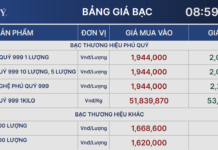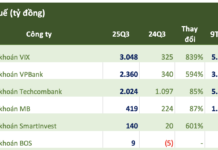Vietnam is one of the fastest-growing logistics markets in the Southeast Asian region, driven by the rapid expansion of its economy and the boom in e-commerce. According to a report by the Vietnam Logistics Services Enterprises Association (VLA), the country’s logistics sector contributes approximately 4-5% to its GDP and is forecasted to continue its robust growth in the coming years.
The rapid development of e-commerce is a significant driver of Vietnam’s logistics industry. A report by Google, Temasek, and Bain & Company shows that the scale of Vietnam’s e-commerce market reached approximately $23 billion in 2023 and is expected to continue growing at a compound annual growth rate (CAGR) of 29% from now until 2025.
While the growth of e-commerce provides a boost to the logistics sector, logistics costs are currently one of the main challenges for online businesses. Compared to the past, cost pressures have improved, but logistics costs in Vietnam remain high, accounting for about 20-25% of GDP, compared to the global average of around 10-15% of GDP. This has created significant challenges for businesses, especially small and medium-sized enterprises (SMEs).
Speaking at a recent event on online logistics solutions for Vietnamese sellers, Mr. Rouger Lou, Director of Alibaba.com Vietnam, acknowledged that logistics is a significant hurdle for SMEs. While the number of products sold by Vietnamese businesses on cross-border e-commerce platforms has increased in the last five years, high logistics costs remain a primary barrier for SMEs.
Ms. Thu Le, Deputy Director of Marketing for a company specializing in dried agricultural product exports, shared that their company’s order values are sometimes only a few hundred thousand dong, but the cost of shipping abroad is relatively high, reducing the company’s competitiveness.
Similarly, Ms. Tran Thi Yen Phi, Director of DSW, a company specializing in agricultural product sales on the Alibaba.com e-commerce platform, emphasized that Vietnam’s logistics costs are considerably higher than in China, reducing the competitiveness of Vietnamese products in the online export market.
“In previous years, even when selling on cross-border e-commerce platforms, we had to find shipping companies ourselves when we received orders. As a result, cost pressure and risks associated with goods were always a burden for businesses. In the past year, cross-border e-commerce platforms have started integrating shipping companies, and Vietnamese businesses’ orders are now combined with those from neighboring countries, reducing shipping costs and increasing the competitiveness of our goods,” said Ms. Yen Phi.

From the perspective of a platform like Alibaba.com, Mr. Lou remarked: “While cross-border e-commerce is booming and creating opportunities for SMEs, they also face challenges, especially in optimizing the export process. Businesses must seek efficient and reliable transportation solutions to ensure on-time delivery while minimizing costs and risks associated with goods.”
He added that providing online logistics services is essential for SMEs in global trade and a way to retain businesses on the platform. In recent years, Alibaba.com has partnered with two logistics giants, UPS and DHL, to support the export of Vietnamese goods to 200 countries and territories within 3 to 7 days.
Through these international express delivery partners, Alibaba.com ensures the safe and timely transportation of goods. They also provide detailed order tracking tools, customs consulting services, and cargo insurance solutions. The platform also assists businesses in exporting to Europe, a market known for its complex tax and fee structure, which can be challenging for newcomers to navigate.
Road Logistics Missing Link: Connecting Regions without Hitches
Exploiting the full potential of road logistics is believed to make a significant contribution to the economy. However, in the development strategy until 2030 and the vision until 2050, promoting the road logistics sector must be accompanied by regional connectivity to achieve synchronization. However, there is still a lack of a “conductor” with the necessary role and authority to coordinate this.
What’s New in the Draft Strategy for Developing Vietnam’s Logistics Services?
The draft strategy for the development of Vietnam’s logistics services, proposed by the Ministry of Industry and Trade, emphasizes the need for a breakthrough in legal framework development and improvement of the business environment. This strategy aims to encourage participation from all economic sectors in the growth of logistics services, creating a vibrant and competitive industry.





































